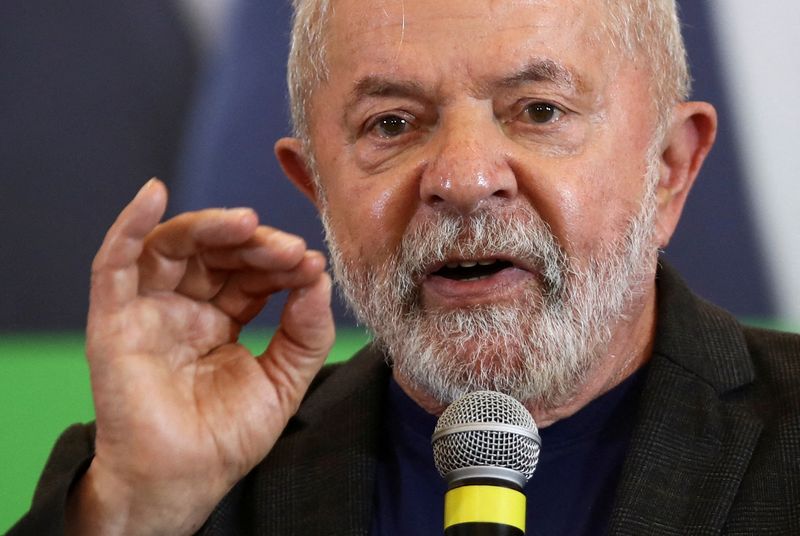Brazil’s Lula eyes flexible primary surplus target to replace spending cap
2022.10.07 17:26
[ad_1]

© Reuters. FILE PHOTO: Brazil’s former president and current presidential candidate Luiz Inacio Lula da Silva speaks during a meeting with campaign associates for the second round of elections, in Sao Paulo, Brazil, October 3, 2022. REUTERS/Carla Carniel/File Photo
By Lisandra Paraguassu
SAO PAULO (Reuters) – Economic advisers to Brazilian presidential candidate Luiz Inacio Lula da Silva are looking at two main ideas to replace a constitutional spending cap, including a flexible primary surplus target, two senior aides told Reuters on Friday.
Lula has resisted pressure to lay out what fiscal rules his government would follow if he is elected in an Oct. 30 runoff vote against President Jair Bolsonaro.
But he has stressed he will not maintain the spending cap, which only allows spending by the federal government to grow as much as the previous year’s inflation. Bolsonaro has also said he is looking at changes to that fiscal anchor.
Lula and advisers in his Workers Party (PT) are looking for ways to raise public spending to jumpstart economic growth, though Lula will only take his decision after the election, two party sources said on condition of anonymity.
One of the proposals involves the establishment of a primary budget surplus target with bands so the government can spend more in the event of an economic downturn. Currently, the primary budget target is fixed, which, according to the sources, prevents the government from adopting counter-cyclical actions.
“If (the economy) slows down, you don’t have the means for the government to act,” said one of the sources.
According to the sources, this proposal is Lula’s preferred option. In public statements, he often repeats that Brazil posted budget surpluses every year of his 2003-2010 presidency but admits that the design of a new rule can be improved.
The sources said that a second proposal would limit spending growth to inflation plus some other unspecified indicator to allow a real increase in federal investment.
[ad_2]
Source link








